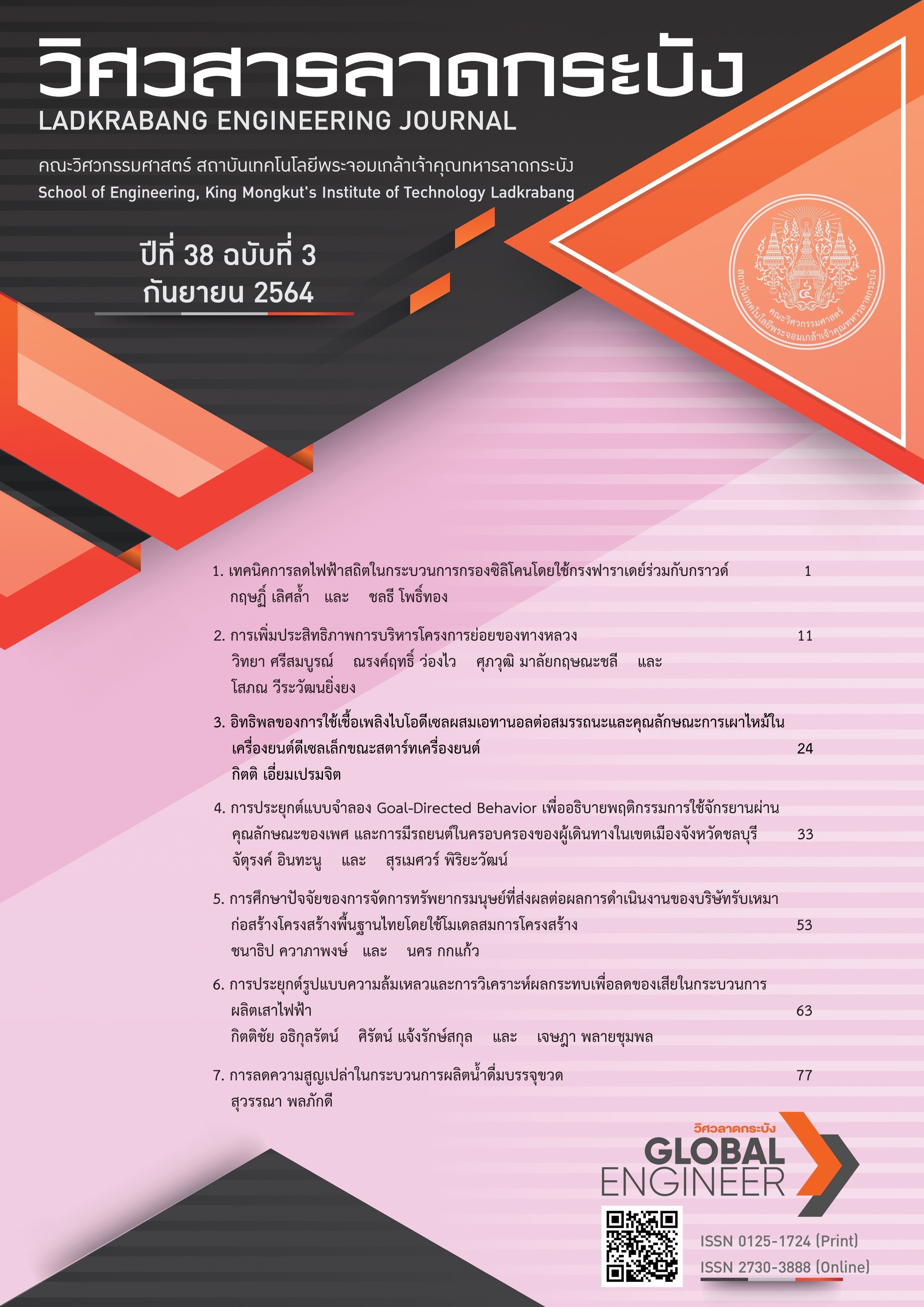Application of Failure Mode and Effects Analysis to Reduce Wastes Power Pole Production Process
Keywords:
Waste, Failure Mode and Effects Analysis (FMEA), Risk Priority Number (RPN)Abstract
The objective of this research is to reduce wastes in the process of power pole production by means of an application of Failure Mode and Effects Analysis (FMEA) in order to calculate Risk Priority Number (RPN) on purpose to select the failure pattern for improvement. According to the initial study, the results display that there are five failure patterns, encompassing with power pole’s crack, burr, incomplete cast, constricted hole and crooking. Based on those failure ones, the evaluation of severity (withthe brainstorm for investigating the cause) and occurrence from that cause, including detection, in regard to quantity was applied for computing RPN. The consequence of calculation demonstratesthat the maximum RPN of 75 is products exposing failure of crack and burr. The crack was the cause of wire cuttingby employees resulting in non-conforming products, while the burr was the reason for imperfect mold during assembly as well as forgetting to bolt the mold. Accordingly, the measure of improvement was inturn determined. In response, the wire cutting was trained to improve knowledge and skills, whereas the visual control application for enabling those employees to assemble the focus point with perfection. After improvement, the outcome is exhibited that wastes are reduced by 11.93%. (decreased from 2.43 to 2.14%). Meanwhile, RPNs in relation to the failure of crack and burrare decreased to 30 and 18, respectively
References
Electronic has no legs, and the energy path of opportunity and happiness. EGAT, (2021, June 15). [Online].Available:http//www.egat.co.th/index.php?option=com_content&view=article&id=3535:20200624art01&catid=49&Itemid=251
K. Athikulrat and K. Dolpanya, “Defective Reduction in Production Process of Plastic films,” Science and Technology Nakhon Sawan Rajabhat Univesity Journal, vol. 11, no. 13, pp.41–50, 2018.
K. Athikulrat and S.Yindeemorh, “Application of Six Sigma to Reduce Waste from Wire Spokes Production Process: A Case Study on Motorcycle Parts Factory,” Research and Development KMUTT, vol. 43, no. 2, pp. 277–296, 2020.
K. Athikulrat and S. Jangruxsakul, “Application of Six Sigma to Reduction of waste in Production : Case Study of Metal Plating Factory, ” MUT Journal of Business Administration Review, vol. 9, No. 2, pp. 1–11, 2019.
K. D. Shama and S. Srivastava, “Failure mode and effect analysis (FMEA) implementation : a literature review.” Journal of Advance Research in Aeronautics and Space Science, vol.5, no. 1–2, pp. 1–17, 2018.
R. Thakore, R. Dave and T. Pasana, “A Case Study: A Process FMEA Tool to Enhance Quality and Efficiency of Bearing Manufacturing Industry,” Scholars Journal of Engineering and Technology, vol.3, no. 4B, pp. 413–418, 2015.
H. C. Lui., X. Q. Chen, C. Y. Duan and Y. M. Wang, “Failure Mode and Effect analysis using multi-Criteria decision Making method: A Systematic Literature Review,” Computer and Industrial Engineering, vol. 135, pp. 881–897, 2020, doi: 10.1016/j.cie.2019.06.055.
A.P., Subriadi and N. F. Najwa, “The Consistency analysis of Failure mode and Effect Analysis (FMEA) in Information Technology risk assessment,” Heliyon, vol. 6, pp. 1–12, 2020, doi: 10.1016/j.heliyon.2020.e03161
Y. Suthikasaneethon, “A Defect Reduction in a Sline Bottle Blow Moulding and Extrusion Process,” M. E. Thesis, Dept. Env. Eng., Sripatum Univ., Bangkok, Thailand , 2017.
C. Jaison, “Waste Reduction of Semi-Automatic Head Stack Assembly Machine In the Hard Disk Drive Production, ” M.E. Thesis, Dept. Indus. Eng., Thammasat Univ., Bangkok, Thailand, 2017.
T. Sansingchai and P. Mata, “Reducing Waste of Machienery Spare Parts Production Line,” B.E. Project, Dept. Indus. Eng., Chaing Mai Univ., Chaing Mai, Thailand, 2019.
P. Georgi, K. L. Bruce and H. C. Bruce. “Severity of Consequence and Likelihood of Occurrence,” Risk Assessment : A Practical Guide Assessing Operational Risk, 1th ed. Hoboken, New Jersey, John Wiley & Sons, Inc., 2016, ch 4, sec 4.10–4.11, pp.76–78.
Downloads
Published
How to Cite
Issue
Section
License
Copyright (c) 2021 Faculty of Engineering, King Mongkut’s Institute of Technology Ladkrabang

This work is licensed under a Creative Commons Attribution-NonCommercial-NoDerivatives 4.0 International License.
The published articles are copyrighted by the School of Engineering, King Mongkut's Institute of Technology Ladkrabang.
The statements contained in each article in this academic journal are the personal opinions of each author and are not related to King Mongkut's Institute of Technology Ladkrabang and other faculty members in the institute.
Responsibility for all elements of each article belongs to each author; If there are any mistakes, each author is solely responsible for his own articles.






